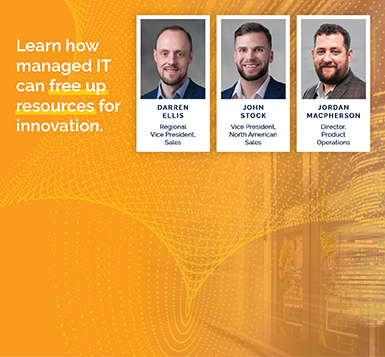
Entuity Training Courses
Check out the Entuity Training Course synopses below.
Beginner Courses
User 1 - Entuity Software™ Fundamentals
In this two-part, 8-hour introductory course, students are first familiarized with Entuity Software™ and the basic concepts of network management, and then provided with the necessary knowledge to perform basic monitoring activities. Part I opens with a discussion of the main features of the Entuity user interface, including Menu Actions, the Help Centre, User preference settings, Entuity’s folder system, “Views”, the Explorer button, Dashboards and more. Then in Part II, students gain an understanding of Events and Incidents, Topological Mapping and Topological Mode, Geographical Mode, creating and configuring time series charts with the charting tool, viewing reports, and lastly locating data within the Entuity database using the search tool.
User 2 - Entuity Software™ Putting Entuity To Work
In this second user training day, students build on learnings from Entuity Software™ Fundamentals, now turning their attention to the product’s power user features. Part I covers the areas of Asset addition, the auto discovery feature, asset credentials management, application availability, creating/sharing/populating Views, View Incident and Event filtering, Advanced Event Management with static and dynamic thresholds, along with more on building Maps, including Topological map mode and Geographical map mode. In Part II, students are introduced to the Remote Terminal feature, IP SLA configuration and monitoring, Integrated NetFlow Analysis, NBAR/NBAR-2, the Configuration Monitor dashboard, scheduling/managing reports with Advanced Reporting, dashboard configurations, and finally Inventory Snapshot/Inventory Change reports.
Advanced & Admin Courses
User 3 - Entuity Software™ Report Builder
In this third and final user training day, students build on learnings from both User 1 and User 2 courses to learn how to create fully customised composite reports within Entuity Software™. Part I contains an overview of the custom reporting types, including Inventory Table, Time Series / Single Chart, Multi Chart / Table, Time Series Table, and Composite, along with a corresponding lab for each during which students will generate and then modify these five report types. Part II looks at creating a Composite Report, using Entuity’s Statement Language (StormWorks) for functions useful to reporting, and lastly incorporating row filtering into Composite Reports.
Admin 1 - Entuity Software™ Event Management System
In this two-part, 8-hour course, students are educated on the Entuity Event Management System (EMS) to understand how Events are routed through EMS to open and close Incidents. Part I opens with an introduction to Events and Incidents, followed by a breakdown of the EMS Architecture, including Processing Stages, projects, Rules, Conditions, Variables, and Triggers. In Part II, students learn how Incidents interact with Events, including creating and modifying Incidents, a discussion of both Incident-specific and Global triggers, managing SNMP Traps and Notifications, importing trap definitions, creating a trap rule, creating a corresponding incident, and finally testing the configuration. On completion of this course students will be able to add and modify existing Events, Incidents, Rules, Conditions, Actions, Triggers, and Global Triggers.
Admin 2 - Entuity Software™ Installation Upgrade and Authentication
This second Admin training day is intended for administrators who will be installing, patching, and upgrading Entuity servers. Part I covers Operating Entuity Software, such as Stopping/Starting the Entuity server, Installation and Upgrade Considerations, like running the installer program, utilizing the patch installer, and running the configuration program, and finally User Access Control, including User Groups, Tool and Reporting permissions, Access Control Views, User Authentication, and Internal/External Authentication. Then in Part II, students start by taking a look at multi-server installations, server roles, configuring server trust, and Central License Server (CLS) configuration. Finally, the course comes to a close with Managing the Entuity Server, which covers backup and restore, database maintenance with the repair tool, monitoring server health, and audit logging.


